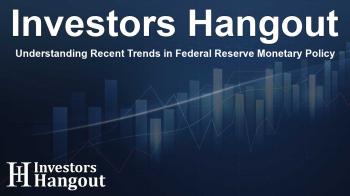Understanding Recent Trends in Federal Reserve Monetary Policy

Insight into the Federal Reserve's Recent Adjustments
Between March 2022 and August 2024, there was significant anxiety surrounding the Federal Reserve's monetary tightening and its potential to spark a recession. Surprisingly, this period saw the anticipated economic downturn not materialize. However, as the Fed started to ease monetary policy, effective September 18, 2024, experts anticipated substantial interest rate cuts were imminent to prevent a recession. Yet, this expectation has recently lost its footing, particularly after a robust employment report.
Market Reactions to Fed Policies
The bond and stock markets are now readjusting their expectations regarding the Federal Reserve's monetary strategies. Following a 100 basis points cut in the federal funds rate from September 18 to December 18, the Fed hinted at further reductions in 2025. The bond market's response indicates that investors are acknowledging the misguided stimulation of an economy that was already stable and the persistence of inflation rates above the Fed’s 2% target.
The Case for Higher Interest Rates
Current economic and inflation indicators suggest a neutral federal funds rate closer to 4-5% rather than 3%. Many are aligning with our perspective that the Fed had initially deemed the rates to be excessively restrictive when positioned around 5%. As the discussions progress, the dominant view centers on a "higher-for-longer" interest rate perspective, although we prefer framing it as "normal-for-longer." This assertion has gained traction in recent weeks, established by strong employment figures.
Recalibrating Expectations
In a press conference on September 18, 2024, Fed Chair Jerome Powell emphasized the need to recalibrate monetary policy to align better with advances in inflation and employment rates. Powell articulated, "the balance of risks is now even," reinforcing a gradual approach towards achieving a neutral stance.
Challenges in the Bond Market
We, along with other financial analysts, have differed from the Fed's stance on recalibration. In our recent briefings, we illustrated concerns about the impending miscalculations regarding interest rate cuts. Notably, our prior discussions warned that the economy was in a transient soft patch and that investors might be overly optimistic about imminent rate reductions if economic indicators improved.
Fed's Strategy Under Scrutiny
Despite our predictions, the Fed proceeded with a 50 basis point cut in September, with indicators suggesting additional reductions soon. We raised concerns about this trajectory in our October briefings, warning that such actions could overstimulate demand and revive inflation, especially as wage and service costs remain persistently high.
Recent Market Adjustments
Since the Fed’s last cut, yields on the 10-year Treasury bond have surged by 114 basis points, while the 2-year Treasury note yield rose by 91 basis points. This escalation indicates a significant shift in market sentiment, highlighting a growing apprehension towards continued rate cuts.
Stock Market Turbulence
As December unfolded, the stock market began recalibrating its forecast for interest rates, aligning with the "higher-for-longer" outlook. The S&P 500 index peaked but subsequently witnessed a notable decline, indicating a reevaluation of expected rate cuts.
Looking Forward
Although the recent downturn sparks concern, this may be a fleeting scenario. Projections for the upcoming Q4-2024 earnings reporting season forecast a substantial increase in operating earnings for S&P 500 companies, creating potential for market recovery.
Frequently Asked Questions
What triggered the Fed’s decision to lower interest rates?
The Fed aimed to stimulate economic activity amid strong employment figures but faced criticism regarding overshooting the necessary cuts.
How have the markets reacted to the Fed's policies?
Markets have adjusted their expectations, anticipating a longer period of higher interest rates rather than quick cuts.
What is the current interest rate outlook?
The prevailing view suggests a more stable rate environment, with the possibility of rates remaining elevated for an extended period.
What might influence future Fed decisions?
Inflation trends and employment statistics will greatly impact the Fed's direction concerning interest rate adjustments.
How can investors position themselves in this environment?
Investors should focus on long-term strategies and remain aware of fluctuations in economic indicators that could signal changes in Fed policies.
About Investors Hangout
Investors Hangout is a leading online stock forum for financial discussion and learning, offering a wide range of free tools and resources. It draws in traders of all levels, who exchange market knowledge, investigate trading tactics, and keep an eye on industry developments in real time. Featuring financial articles, stock message boards, quotes, charts, company profiles, and live news updates. Through cooperative learning and a wealth of informational resources, it helps users from novices creating their first portfolios to experts honing their techniques. Join Investors Hangout today: https://investorshangout.com/
Disclaimer: The content of this article is solely for general informational purposes only; it does not represent legal, financial, or investment advice. Investors Hangout does not offer financial advice; the author is not a licensed financial advisor. Consult a qualified advisor before making any financial or investment decisions based on this article. The author's interpretation of publicly available data presented here; as a result, they should not be taken as advice to purchase, sell, or hold any securities mentioned or any other investments. If any of the material offered here is inaccurate, please contact us for corrections.
